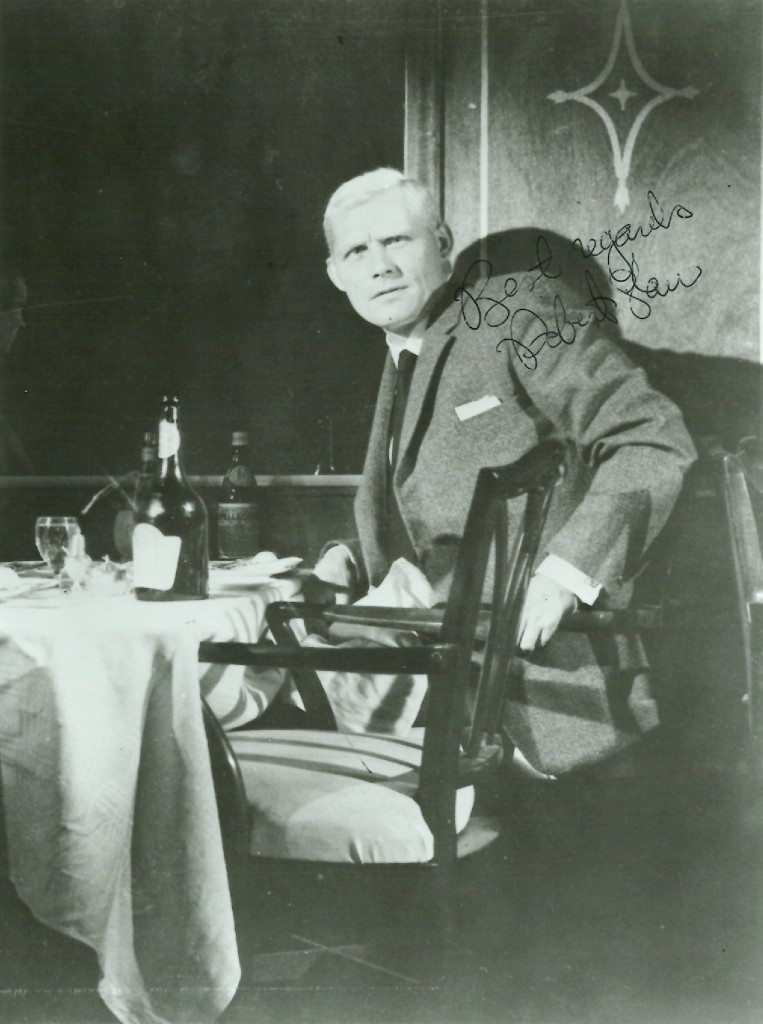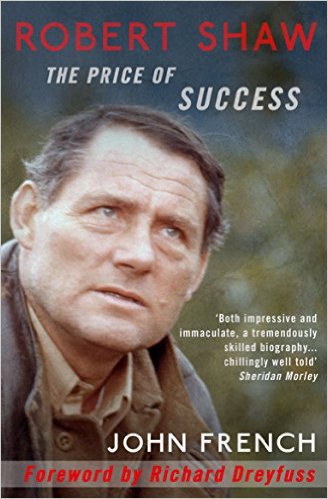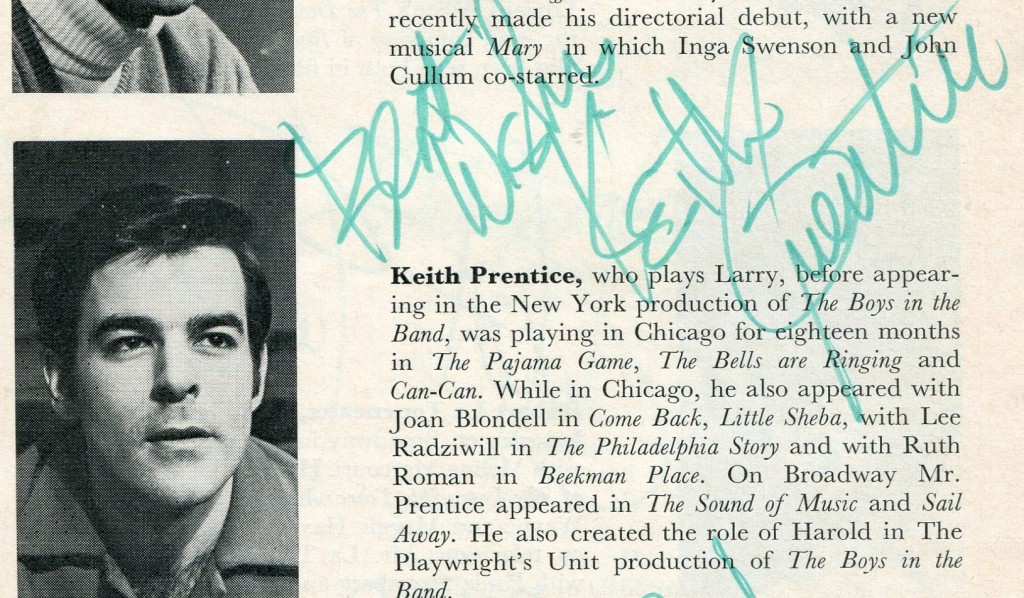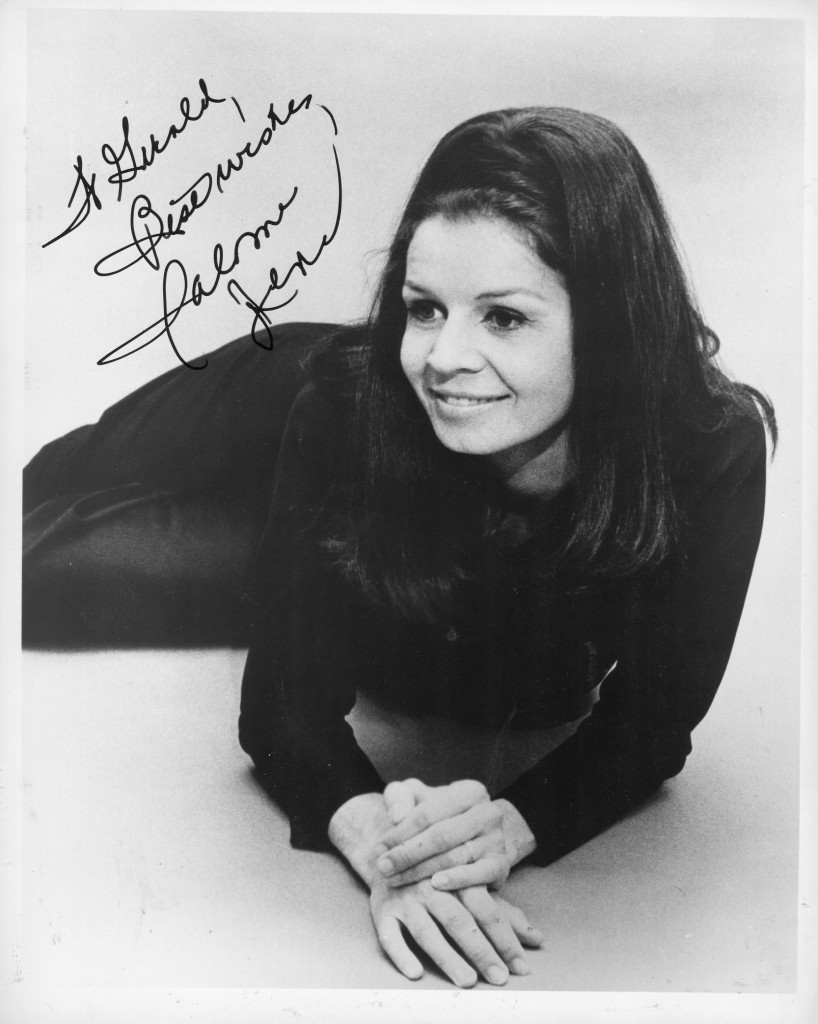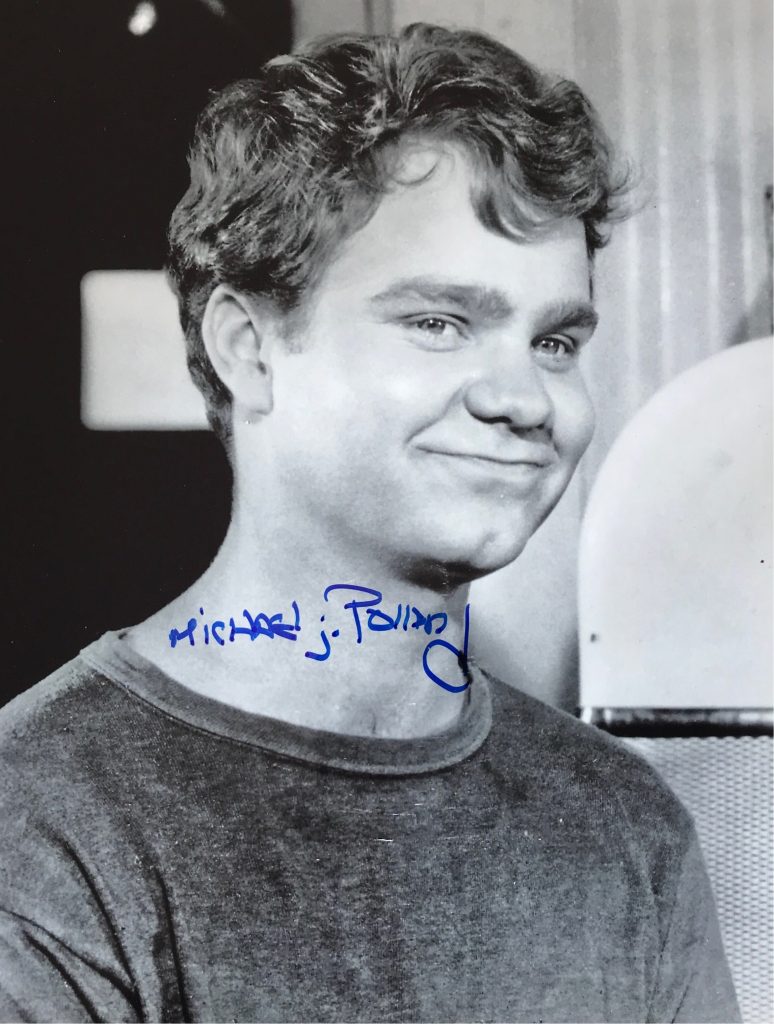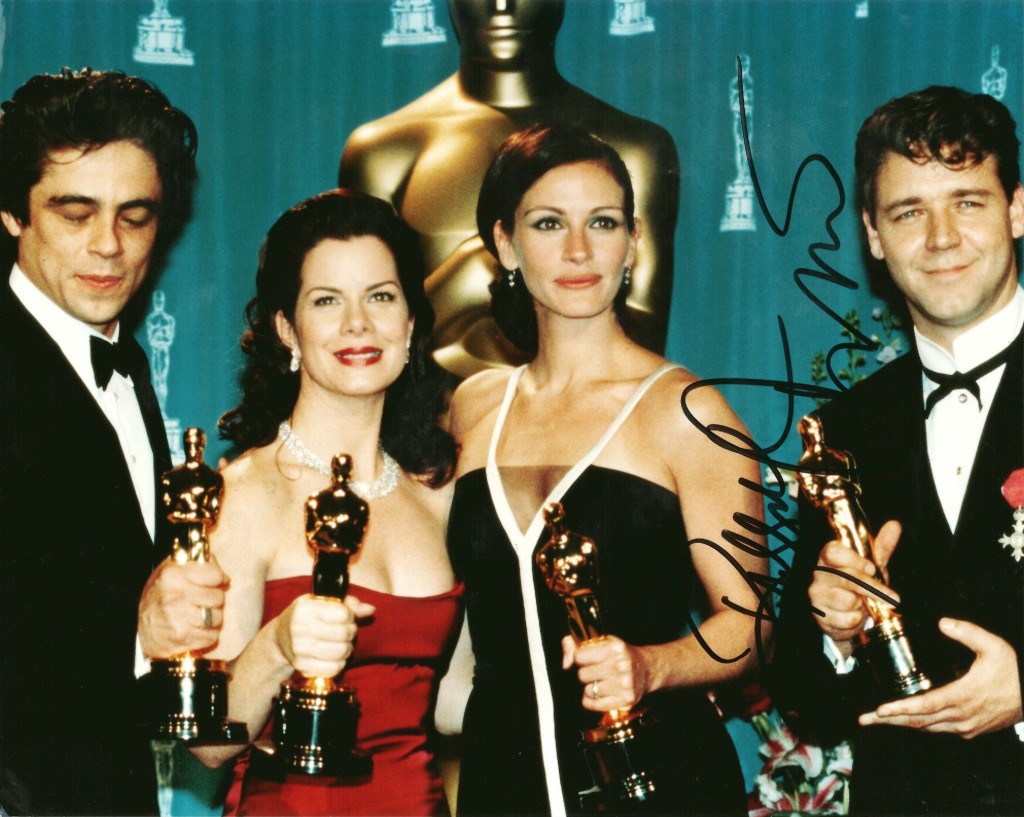
Crowe is one of my favourite actors. He was born in Wellington, New Zealand in 1964. and raised in Australia. He made his mark internationally with “Romper Stomper” and received the Oscar in 2000 for “Gladiator”. He is seen here at the Oscar ceremony with Benecio Del Toro, Marcia Gay Harden and Julia Roberts, all winners that year. Thanks to John Mulry for the autograph.
TCM overview:
A galvanizing presence who earned Hollywood’s highest acting accolades, but whose mercurial temperament put him in hot water publicly, actor Russell Crowe ultimately built a reputation as an A-list leading man, whose electric performances well overshadowed his so-called bad boy nature. With an intense breakout performance as a racist skinhead in the Australian-made “Romper Stomper” (1992), Crowe established himself as an actor on the rise. Crossing the Pacific, he exploded off the screen as a violent 1950s police detective in “L.A. Confidential” (1997), announcing loudly to American audiences that he had arrived. Two years later, Crowe earned his first Academy Award nomination with a sterling performance as a tobacco executive trapped between telling the truth and protecting his family in “The Insider” (1999). But it was his turn as a Roman general in “Gladiator” (2000) that brought home Oscar glory. He was exceptional as schizophrenic math genius John Nash in “A Beautiful Mind” (2001), and followed up with acclaimed roles in “Cinderella Man” (2005) and “3:10 to Yuma” (2007). Crowe reached a personal low point when he was famously arrested for striking a New York hotel concierge with a telephone, prompting an arrest that dogged him for years afterward. But such incidents failed to derail his career, as he turned in fine performances in “American Gangster” (2007), “State of Play” (2009) and “Robin Hood” (2010). Despite his highly public personal stumbles, Crowe was an actor of extraordinary talent and range capable of delivering one acclaimed performance after another.
Born on April 7, 1964 in Wellington, New Zealand, Crowe grew up in and around show business. His grandfather, Stan Wemyss, was a cinematographer whose footage of World War II earned him the title of Member of the Order of the British Empire. His parents, Alex and Jocelyn, were both film set caterers who moved the family to Australia because of better job opportunities, providing Crowe ready access when he began acting at age six. His first onscreen role was in an episode of the Australian TV series “Spyforce,” starring Jack Thompson – a part he landed thanks to his mother, who worked on the show. When Crowe was 14, the family moved back to their native New Zealand where his father took over managing a pub called The Flying Jug. About this time, Crowe began performing in rock bands under the name Rus Le Roq, though much of his early music was not especially well-received.
Determined to pursue a career in show business, Crowe returned to Australia when he was 18. Within a year of his return, Crowe landed a role singing and dancing on stage in an Australian production of “Grease.” While he spent two years (1986-88) touring as Dr Frank N Furter in “The Rocky Horror Show,” it was his turn in Willy Russell’s “Blood Brothers” (1989) that caught the attention of director George Ogilvie, who cast him in a leading role the triangular drama “The Crossing” (1990). It was on the set of this film that he met his longtime girlfriend and later wife, actress-singer, Danielle Spencer. Playing a dishwasher who befriends a blind photographer in Jocelyn Moorhouse’s “Proof” (1991) earned Crowe strong reviews, as well as the Best Supporting Actor Award from the Australian Film Institute. He copped a Best Actor trophy and international fame the following year for a blistering, yet nuanced performance as the vicious leader of a skinhead gang lashing out against a growing number of Asian immigrants in the controversial “Romper Stomper.” That same year, Crowe – who had been a musician since he was a teenager – formed the rock band 30 Odd Foot of Grunts with his old mates from Australia. Over the years, the band recorded several albums, none of which achieved any notable recognition or success.
With several films achieving success on the art house circuit, Crowe was established internationally and began to invoke comparisons with another transplanted Aussie, Mel Gibson. He followed up with an intriguing variety of offbeat projects, ranging from the historical drama “Hammers Over the Anvil” (1993) to the children’s film “The Silver Stallion King of the Wild Brumbies” (1993). Crowe gave another splendid performance as a virginal Welsh Baptist in “Love in Limbo” (1993) and shone as a gay plumber living with his middle-aged father (Jack Thompson) as both search for love in “The Sum of Us” (1994). It was inevitable for Hollywood to woo him with roles like his gunslinger-turned-preacher in the punchy Sharon Stone-produced Western, “The Quick and the Dead” (1995) and as the malevolent computer-generated serial killer in Denzel Washington’s star vehicle, “Virtuosity” (1995).
Thanks to Crowe’s brooding onscreen intensity, director Curtis Hanson offered him the plum role of Officer Bud White, a quick-tempered, brutal homicide detective in the superb adaptation of James Ellroy’s noir thriller “L.A. Confidential” (1997). Paired with fellow Aussie mate Guy Pearce and Oscar-winner Kevin Spacey, the actor completed a trio of detectives who investigate a web of police corruption and public scandal in 1950s Los Angeles. With a higher profile and an armload of good notices, Crowe next played a hockey player who gets the chance to play against a professional team in the David E. Kelley-scripted “Mystery, Alaska” before landing the choice role of tobacco industry whistle-blower Jeffrey Wigand in Michael Mann’s fictional take on a true story, “The Insider” (both 1999). Crowe garnered a Best Actor Oscar nomination for his characterization of a family man who risks his life and reputation to refute public testimony given by cigarette manufacturers. The fact the he was able to morph into a paunchy, balding middle-aged man believably, also added to the growing comparisons to Brando and DeNiro.
As a follow-up, Crowe buffed up and undertook the title role in Ridley Scott’s big-budgeted summer release “Gladiator.” Playing Maximus, a fallen Roman general-turned-professional fighter, the actor more than dominated the film – he tore a hole in the big screen with his intensity, earning rave notices and a Best Actor Academy Award for his efforts. The role solidified Crowe as one of Hollywood’s top actors and most bankable male movie stars. He rounded out the year playing a professional negotiator in kidnapping cases who comes to the aid of an American woman in a fictional South American country in “Proof of Life.” The movie, however, was overshadowed by the media’s reporting of his brief fling with co-star Meg Ryan, whose then-marriage to Dennis Quaid was falling apart. A critical drubbing coupled with audience indifference – and some disgust over Crowe’s assumed corrupting of “America’s Sweetheart” by the press – put a final stake into the film, making it one of Crowe’s least memorable.
The disappointing box office and domestic scandal notwithstanding, Crowe emerged unscathed. He next portrayed John Nash, a real-life mathematician who descended into schizophrenia only to overcome his illness and go on to win a Nobel Prize in Ron Howard’s biopic “A Beautiful Mind” (2001). His beautifully realized, nuanced performance ranked as one of his best to date and earned the actor his third consecutive Best Actor Academy Award nomination, as well as a Golden Globe Award for Best Performance by an Actor in a Motion Picture – Drama. Unfortunately, the well-earned Oscar slipped through his fingers following the first of a series of public altercations which cast a temporary shadow over his onscreen accomplishments. During Crowe’s acceptance of a BAFTA for Best Actor for “A Beautiful Mind,” the BAFTA show’s producer cut him off mid-speech and mid-poem, causing a fracas backstage when Crowe reportedly pinned the producer against the wall, threatening him and hurling obscenities. Feeling put upon by the media’s excessive attention to his personal life – especially his reputation as a brawler – Crowe retreated from the limelight for a spell, emerging only to marry longtime on-again, off-again girlfriend Danielle Spencer and to subsequently announce his impending fatherhood in 2003.
At the end of that year, however, Crowe’s name was again on the lips of filmgoers, critics and the Hollywood elite following his much-praised performance in director Peter Weir’s “Master and Commander: The Far Side of the World.” In the rollicking, harrowing high-seas adventure based on the series of 20 historical novels by Patrick O’Brien, Crowe made for a perfect screen incarnation of Capt. “Lucky” Jack Aubrey, the skipper of the beleaguered British naval vessel the H.M.S. Surprise during the Napoleonic Wars, who wrestles with his conscience as he forces his crew to embark on a perilous pursuit of their enemy. Crowe’s turn was immediately hailed as award-worthy, and the actor yet again demonstrated his lack of vanity and commitment to his craft when he physically bulked up to match the heavyset literary description of Lucky Jack. Though no Oscar nod was forthcoming, Crowe did receive a nomination for Best Actor in a dramatic role at the 2003 Golden Globes.
After a yearlong absence from the big screen, Crowe reunited for the third time with director Ron Howard for “Cinderella Man” (2005) and received yet another round of glowing reviews and Golden Globe nod for his charming turn as Depression-era fighter and folk hero Jim Braddock, who defeated heavyweight champ Max Baer in a 15-round slugfest in 1935. In his initial public appearances to promote the film, Crowe seemed more relaxed and at peace with himself than ever before. So it came as a bit of a shock when, in an even more publicized smackdown, the actor was arrested for assault in New York City the week of the film’s debut after he allegedly threw a telephone at a hotel concierge in a fit of pique when he could not reach his wife in Australia. The actor subsequently appeared on “The Late Show” (CBS, 1993- ) alongside host David Letterman to publicly apologize for his by-then infamous short fuse, while pleading guilty in November 2005 to third-degree assault in a court of law. He paid $160 in court fees and was told to behave himself for a year, avoiding a more serious charge that could have landed him in prison and cost him his U.S. work visa.
With the ugliness of the assault behind him, Crowe went back to work, starring in a couple of small budget films – perhaps to maintain a low profile. In “A Good Year” (2006), his second collaboration with Ridley Scott, Crowe played an investment banker operating in the cutthroat world of London finance who reluctantly agrees to take over a small vineyard after the death of his uncle (Albert Finney). It is in the open French countryside where he eventually learns that life is meant to be savored. After providing the narration for “Bra Boys” (2007), an Australian documentary about a much-maligned surfer community living near the Sydney suburb of Maroubra, Crowe returned to high profile features with James Mangold’s gritty western “3:10 to Yuma” (2007). While the film suffered a bit from the glut of Westerns released the same time, it was critically well-received, as was Crowe’s performance as an imprisoned desperado who convinces a desperate rancher (Christian Bale) to help him escape in exchange for a share of hidden loot.
The cast of “3:10” was nominated for a Best Cast award from the Screen Actor’s Guild, as was the cast of Crowe’s next feature, “American Gangster” (2008). This time, Crowe was back on the right side of the law, playing a detective who teams up with a former drug kingpin (Denzel Washington) in order to expose corrupt cops and foreign nationals profiting from smuggling heroin. Later in the year, Crowe appeared opposite Leonardo DiCaprio as the overseer of a CIA operative tracking a high-ranking terrorist in Ridley Scott’s “Body of Lies” (2008). The rote espionage thriller was boosted by the pair’s excellent performances. Crowe followed up with another politically inspired tale, “State of Play” (2009), which found him portraying a newspaper editor investigating the mysterious death of a Washington politician’s (Ben Affleck) mistress. Teaming with director Scott again, Crowe took on the historic role of “Robin Hood” (2010), combining his explorations of law enforcement and criminals to portray the leader of a band of “Merry Men” whose mission is to spread the wealth of the wealthy among the deserving poor. That same year, he played a mild-mannered husband determined to free his wrongly jailed wife – even if that means busting her out of prison – in Paul Haggis’ rather underwhelming thriller “The Next Three Days” (2010).
In October 2012, after nearly a decade of marriage, Crowe and wife Danielle Spencer announced their separation, each committing to maintain a civil relationship for the sake of their sons. As speculation ran rampant among the tabloids, the prime suspect in what led to the break up was Crowe’s increasingly hectic work schedule, which had ramped up considerably in the recent year. Among the slew of projects Crowe began appearing in by the end of the year was the martial arts actioner “The Man with the Iron Fists” (2012), an homage to Hong Kong action flicks from the ’70s, directed and co-scripted by rap superstar RZA. In the film, co-written and produced by horror auteur Eli Roth, Crowe played Jack Knife, an opium-addicted British soldier named after his weapon of choice. Little more than a month later, he was seen again in one of the most eagerly anticipated productions of the year, a lavish, big-budget cinematic adaptation of the smash Broadway musical “Les Misérables” (2012), based on the novel by Victor Hugo. Cast as the obsessed Inspector Javert, Crowe not only delivered an intense portrayal opposite fellow Aussie Hugh Jackman, but gave audiences a sampling of his impressive vocal abilities, performing several of the iconic songs by Claude-Michel Schönberg, Alain Boublil and Herbert Kretzmer.
By Shawn Dwyer


